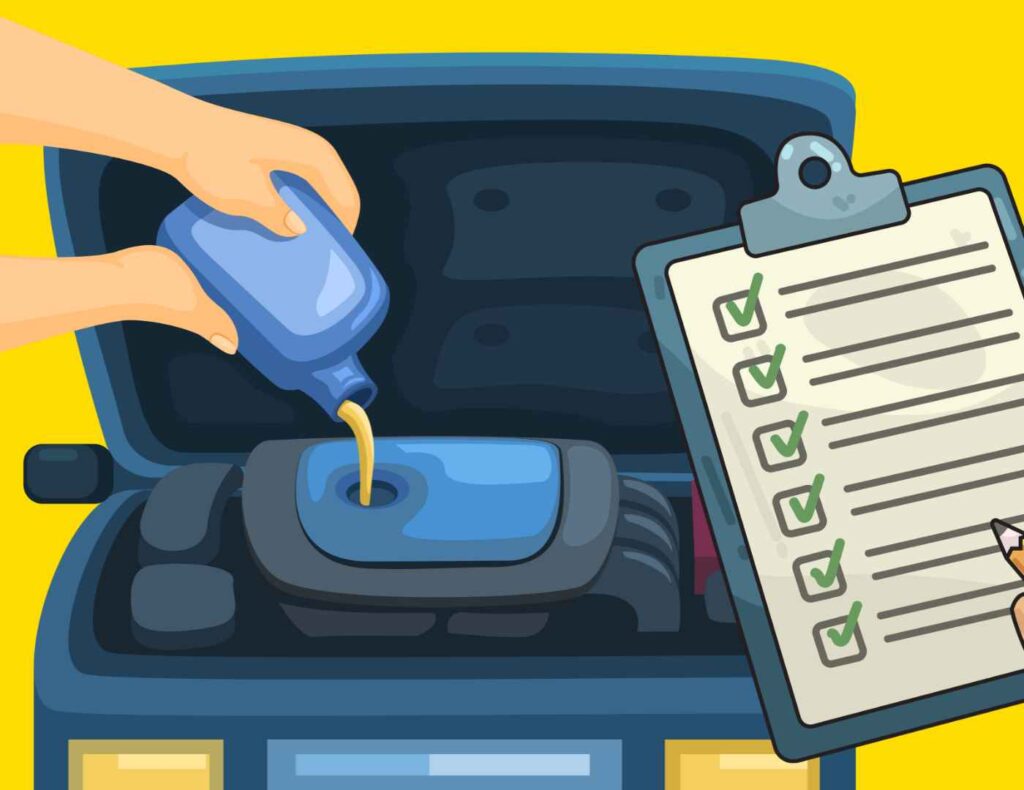Essential Oil Change Checklist Every Driver Should Know
As a car owner, one of the most crucial aspects of vehicle maintenance is ensuring that your engine runs smoothly. One of the most important tasks to keep your car in top condition is the regular oil change. The oil in your engine acts as its lifeblood, helping to reduce friction, keep parts lubricated, and prevent overheating. However, knowing when to change your oil and how to do it properly can be confusing. That’s why we’ve created this essential oil change checklist for every driver to follow. By staying on top of your oil changes, you can keep your car running longer and more efficiently.

Why Oil Changes Are So Important
Before diving into the checklist, it’s important to understand why oil changes are so critical for your car’s longevity. Motor oil plays a vital role in lubricating the engine parts, reducing wear and tear. Over time, however, the oil degrades, becomes contaminated, and loses its ability to properly lubricate the engine. This can lead to engine damage, decreased performance, and even costly repairs. Regular oil changes are the best way to ensure that your engine remains well-lubricated and performs at its best.
Signs That Your Car Needs an Oil Change
Before we dive into the checklist, it’s also essential to recognize the signs that your car may need an oil change. These include:
Engine Noise: If your engine starts making knocking or grinding noises, it could be a sign that the oil is no longer lubricating the parts properly.
Oil Change Light: Most modern cars have an oil change light that will turn on when it’s time for an oil change.
Exhaust Smoke: If you see blue or gray smoke coming from the exhaust, it might indicate that the oil is burning or leaking.
Decreased Performance: If your car is sluggish, feels less powerful, or has poor acceleration, dirty oil could be the culprit.
Essential Oil Change Checklist
Now that you understand the importance of oil changes and how to spot the signs that your car needs one, let’s move on to the checklist. Follow these steps every time you change your oil to ensure your car runs smoothly.
1. Check the Oil Type
The first step in your oil change checklist is to check the type of oil recommended by the manufacturer. You’ll typically find this information in your car’s owner’s manual. Different cars require different types of oil, such as conventional, synthetic, or a blend. Using the right oil ensures the engine gets the lubrication it needs.
Conventional Oil: Best for older cars or cars with low mileage.
Synthetic Oil: Ideal for newer vehicles or cars driven in extreme conditions (e.g., high temperatures or heavy towing).
Blend Oil: A mix of conventional and synthetic oil, suitable for vehicles that don’t require the extreme performance of full synthetic oil.
Using the correct oil type is crucial for your car’s performance. Choosing the wrong type can lead to engine inefficiency and damage.
2. Check Oil Level and Condition
Before starting an oil change, always check the oil level and condition. You can do this by using the dipstick to measure the oil level. Pull out the dipstick, wipe it clean, dip it back in, and then pull it out again to check the oil level.
Oil Level: The oil should be between the minimum and maximum marks. If it’s low, top it up with the correct oil type.
Oil Condition: Fresh oil is typically amber in color and translucent. If the oil looks dark, gritty, or smells burnt, it’s time to change it.
3. Prepare the Necessary Tools and Supplies
To ensure a smooth oil change, you’ll need the following supplies:
New Oil: Ensure you have the correct amount of oil and the right type.
New Oil Filter: Changing the oil filter is essential to maintaining good engine health.
Wrench: For removing the oil drain plug.
Oil Pan: To catch the old oil.
Funnel: To avoid spills when adding new oil.
Gloves and Rags: To keep your hands clean and wipe up any spills.
Having everything prepared before you start will help you avoid mistakes during the process.
4. Drain the Old Oil
Once you’ve gathered all the necessary tools, it’s time to drain the old oil. Start by placing the oil pan underneath the oil drain plug. Use a wrench to loosen the plug, and allow the oil to drain completely. This process may take several minutes, so be patient.
Caution: The oil can be hot right after driving, so be careful when handling the oil drain plug. Wear gloves to protect your hands.
5. Replace the Oil Filter
While the old oil is draining, it’s a good time to replace the oil filter. The oil filter traps contaminants, and over time, it can become clogged, reducing the effectiveness of the oil. To replace it, locate the oil filter (usually near the engine), use an oil filter wrench to remove it, and install a new one. Be sure to lubricate the new filter’s rubber seal with a small amount of new oil before installing it to ensure a proper seal.
6. Add New Oil
Once the old oil has drained and the oil filter has been replaced, it’s time to add the new oil. Use a funnel to pour the oil into the oil filler cap. Refer to your car’s manual to determine the correct amount of oil your car requires.
Check the Level Again: After adding the new oil, wait for a minute, then check the level using the dipstick. Add more oil if necessary, but do not overfill. Overfilling can cause pressure buildup and lead to engine damage.
7. Check for Leaks
After you’ve added the new oil, start the engine and let it run for a few minutes. Check underneath the car to ensure there are no oil leaks from the drain plug or oil filter. If you notice any leaks, turn off the engine immediately and address the issue before proceeding.
8. Dispose of Old Oil Properly
Proper disposal of used oil is crucial for environmental reasons. Never dispose of old oil by pouring it down the drain or throwing it in the trash. Many auto parts stores and service centers offer oil recycling services. Make sure to take your old oil to a proper disposal facility.
9. Reset the Oil Change Light
Many modern cars are equipped with an oil change reminder system that will light up when it’s time for an oil change. After changing the oil, don’t forget to reset the oil change light on your dashboard. Refer to your car’s manual for specific instructions on how to do this, as it can vary by make and model.
10. Track Your Oil Changes
Keeping track of your oil changes is essential for maintaining your car’s health. Some vehicles have a maintenance log, while others can be tracked using an app or a simple written record. Tracking the date of your last oil change and the mileage will help you know when it’s time for the next one.
How Often Should You Change Your Oil?
The frequency of oil changes depends on various factors, including the type of oil used, the car model, and your driving habits. A general rule of thumb is to change your oil every 3,000 to 5,000 miles if you use conventional oil. If you use synthetic oil, you may be able to go longer, typically between 5,000 to 7,500 miles.
However, always consult your owner’s manual for specific recommendations based on your car’s requirements.
Conclusion
Regular oil changes are essential for keeping your car in optimal condition and ensuring the longevity of your engine. By following this comprehensive oil change checklist, you can maintain your car’s performance and avoid costly repairs in the future. Whether you do it yourself or take it to a professional, always make sure your car gets the care it deserves.

